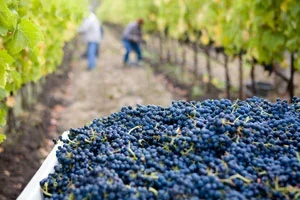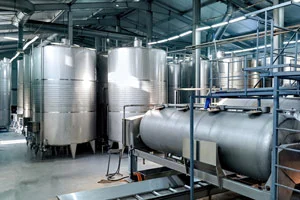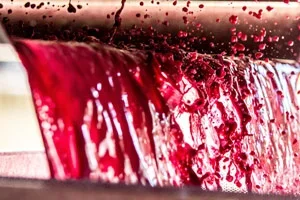Malolactic fermentation (MLF) represents a crucial stage in quality winemaking, especially in red wines and certain structured whites. This process, of a biological nature, involves the transformation of L-malic acid into L-lactic acid through the action of lactic acid bacteria, mainly Oenococcus oeni. The result is a reduction in the overall acidity of the wine, but its implications go far beyond a simple pH adjustment.
When properly managed, MLF contributes to improving the microbiological stability of the wine and to defining its sensory profile. Conversely, if not technically controlled, it can lead to significant deviations, both chemical and organoleptic, that compromise the quality and longevity of the final wine.
Oenological importance of Malolactic Fermentation
More than an acid correction, malolactic fermentation should be understood as a refinement tool. The transformation of malic acid into lactic acid not only modifies the taste perception of the wine, making it rounder and smoother, but also allows better integration of the polyphenolic structure, especially in red wines with a certain tannic load.
During the process, secondary compounds are generated that can add aromatic complexity, such as certain esters and diacetyl. The latter must be managed with precision, since its presence in moderate concentrations can enrich the wine profile, while in excess it acts as a masking agent, hiding the varietal or terroir expression.
Also, by eliminating malic acid, a potential substrate for various contaminating microorganisms, MLF helps to stabilize the wine from a microbiological point of view, reducing the risk of undesired fermentation in the bottle or later in the process.
Risks of uncontrolled Malolactic Fermentation
The main risk associated with poorly conducted malolactic fermentation is the loss of microbiological control. In the absence of favorable conditions or without the intervention of the winemaker, the process can be left to spontaneous microbiota, which considerably increases the probability of deviations.
Undesirable effects include the formation of biogenic amines, such as histamine, potentially harmful compounds that are regulated in some markets. There may also be an increase in volatile acidity, due to the activity of undesirable bacteria such as Lactobacillus or Pediococcus, which can also generate organoleptically unpleasant compounds.
Another critical aspect is the loss of chromatic intensity in red wines. Bacteria can adsorb anthocyanins or generate conditions that favor their precipitation. Finally, varietal and fermentative aromas can be attenuated or replaced by dominant lactic notes if the process is not properly regulated.
Determinants of success
The correct development of malolactic fermentation depends on a series of physicochemical parameters that must be systematically monitored. Temperature is one of the most influential factors: Oenococcus oeni develops its optimal activity between 20 and 25 °C. Temperatures below 18 °C significantly slow down the process and can even halt it.
The pH of the wine also conditions bacterial viability. Although some selected strains can tolerate values close to 3.2, the ideal range is above this threshold. In wines with low pH, it will be essential to use adapted cultures.
The free sulfur dioxide content has a clear inhibitory role. Levels above 10 mg/L drastically reduce bacterial activity, so it must be precisely adjusted, especially if post-fermentation inoculation is planned.
Added to this is the alcohol tolerance of the selected bacteria (necessary in wines above 14% vol.) and the presence of specific nutrients, such as amino acids, peptides and B vitamins, which are often depleted after alcoholic fermentation and can be replenished by oenological supplements.
Strategies to induce or inhibit Malolactic Fermentation
Controlled Malolactic Fermentation induction
When the winemaking objective is to achieve complete and safe malolactic fermentation, either because of the style of wine (structured red, crianza, reserva) or because of subsequent storage conditions, it is essential to act proactively. The first key decision is the choice of inoculation timing. There are two main strategies:
- Co-inoculation, which consists of adding the selected lactic bacteria during the active phase of alcoholic fermentation, generally 24 to 48 hours after yeast. This strategy shortens vinification times, favors rapid and homogeneous implantation and reduces the risk of contamination by suppressing the lag phase.
- Sequential inoculation, carried out after alcoholic fermentation has been completed. This option offers greater control over sensory profiles, as it allows oxygen to be used between alcoholic and malolactic fermentation.
In both cases, success depends on the adaptation of the bacterial strain to the wine conditions, especially to high alcohol levels, low pH and the presence of residual sulfites. Additionally, in clarified wines or wines with low turbidity, it is essential to provide specific nutrients, such as Actimax Oeni, to ensure the viability and fermentation efficiency of the bacteria.
Thermal control should be maintained at around 20-23 °C, especially in sequential inoculations, where prolonged cold inactivity can encourage the growth of undesirable microflora.
Technical inhibition of Malolactic Fermentation
In some wine styles-for example, aromatic whites such as Sauvignon Blanc, Riesling or Verdejo-it may be preferable to avoid malolactic fermentation altogether in order to preserve freshness, natural acidity and primary aromas. In these cases, it is essential to design an effective preventive strategy.
One of the most useful tools is wine acidification, since pH values below 3.2 significantly hinder bacterial activity. This condition, combined with a precise adjustment of free SO₂ (ideally between 25 and 30 mg/L), generates a hostile environment for O. oeni and other lactic acid bacteria.
In addition to sulfur, there are more specific alternatives based on natural antimicrobial agents:
- Fumaric acid, with bacteriostatic and bactericidal action specifically directed against lactic bacteria, acts without interfering with residual yeasts. Its application is particularly effective in wines with pH below 3.5 and no MLF initiated.
- Chitosan, derived from chitin, acts through electrostatic interactions with the cell wall of bacteria, which alters their structure and destabilizes them. Its use allows selective reduction of the microbiological load and is especially recommended after AF in wines that will not undergo MLF.
Management of Malolactic Fermentation in spring
The arrival of spring represents a critical moment for wines that have spent the winter in tanks or barrels with temperatures below 15 °C. Under these conditions, MLF may have stalled or not started at all. This dormant state, if not properly managed, can lead to undesirable spontaneous fermentations dominated by uncontrolled residual flora.
To restart MLF in a controlled manner, it is essential to act on several variables at the same time. First of all, it is essential to re-establish an adequate temperature, generally through the use of thermal jackets, heating elements or recirculation systems that raise the wine to 20-23 °C.
At the same time, a microbiological analysis must be carried out to determine the population status of the wine. If the presence of contaminants or a high residual yeast population is detected, it is advisable to apply chitosan prior to inoculation with selected bacteria.
The addition of an active culture of Oenococcus oeni, adapted to the conditions of the wine, makes it possible to induce an effective MLF. To favor its implantation and metabolism, the use of a nutritional supplement such as Actimax Oeni, which provides amino acids, vitamins and essential trace elements, is recommended.
This integrated approach reduces fermentation times, avoids deviations and ensures the stability of the wine before aging or bottling.
Choice of bacterial cultures
The choice of bacterial culture is critical to the success of MLF. Not all commercial strains perform equally well, and their efficacy depends on multiple factors: alcohol tolerance, implantation capacity, level of diacetyl or histamine production, and aromatic compatibility with the base wine.
A good strain must be adapted to high ethanol concentrations (up to 15-16 % vol), withstand moderate levels of total SO₂ (up to 50-60 mg/L), and maintain constant activity in pH ranges close to 3.2.
In addition, for cellaring wines, it is important that the culture exhibit low biogenic amine production and a moderate rate of diacetyl synthesis, except in styles where this lactic note is intentionally sought after.
For example, the Viniferm OE AG-20 strain has been selected for its oenological origin, its ability to establish in dense polyphenolic matrices, and its low risk of microbiological deviations. Its use allows fast and safe MLF, even under limited alcohol and IPT conditions, providing sensory balance without compromising varietal character.
Viniferm OE AG-20: a technical strain for safe MLF
Viniferm OE AG-20 is a strain of Oenococcus oeni selected by Agrovin group. Its technical profile has been validated in trials on wines with high polyphenolic load and pH and alcohol limit conditions.
Outstanding characteristics:
- High viability, liquid culture pre-adapted to wine conditions.
- Adaptability:
- Tolerance to ethanol up to 16 % vol.
- Active at pH from 3.4.
- Resists up to 60 mg/L total SO₂.
- Rapid establishment even in wines with high IPT.
- Very low production of biogenic amines, validated under industrial conditions.
- Controlled aromatic expression, with limited diacetyl synthesis and respect for varietal characters.
- Bioprotection effect against Brettanomyces, by occupying the ecological niche and reducing residual substrates.
Thanks to its predictable behavior and neutral sensory profile, Viniferm OE AG-20 is ideal for application in:
- Young and aged red wines.
- Spring situations where it is necessary to induce MLF after months of inactivity.
- Wines with low pH or high alcohol, where spontaneous implantation is unlikely or risky.
- Co-inoculation schemes, thanks to their compatibility with selected yeasts.
Master malolactic fermentation control and ensure the quality of your wine. At Agrovin, we offer complete solutions: from selected lactic acid bacteria that maximize aromatic stability without generating biogenic amines, to tools such as Microstab ML—formulated with fumaric acid and chitosan—that inhibit fermentation when necessary, preserving acidity and preventing undesirable deviations.
Contact our specialized technical team now and work under rigorous and versatile control of the malolactic process, adapted to the style of your winery.









